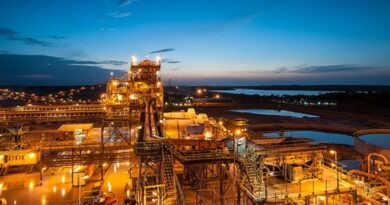Fuel cell: built for speed
Specialist vehicles like racing cars and ambulances can benefit from the advantages of zero-emissions platinum-based fuel cell electric propulsion.
Annual sales of hydrogen fuel cell electric vehicles (FCEVs) could reach 4.6 million by 2030, especially as the cost of hydrogen starts to fall. In the short to medium term, platinum demand growth is likely to be driven by heavy duty and fleet FCEVs – trucks, buses and forklifts – with the market for FCEV passenger vehicles developing over the longer term as refuelling infrastructure for low-cost hydrogen rolls out.
FCEVs almost always use proton exchange membrane (PEM) fuel cells which contain platinum catalyst layers to produce electricity. The only by-products of this carbon-free, zero-emissions technology are heat and water.
Fuel cells share many of the characteristics of a battery – silent operation, no moving parts and an electrochemical reaction to generate electrical power. However, unlike a battery, fuel cells need no recharging and can run indefinitely when supplied with hydrogen, although a FCEV can have a battery as a system component to store the electricity the fuel cell generates.
Further advantages of FCEVs include long range and speedy refuelling times – for example, Hyundai’s Nexo SUV FCEV can refuel in around five minutes and then travel up to 414 miles (662 km).
HIGH-PERFORMANCE HYDROGEN VEHICLES
Such are the benefits of PEM fuel cells that they are also well suited to high-performance vehicles. Indeed, in a project firmly focused on the sustainable future of high-speed endurance racing, Red Bull Advanced Technologies is collaborating on the design of the chassis concept for the next generation of hydrogen-fuelled cars planned for the 2024 edition of the 24 Hours of Le Mans, the world’s most famous endurance race. As part of the project, Red Bull will bring its Formula 1 expertise in aerodynamics, vehicle dynamics, simulation technology and energy recovery optimisation to the project.
Plastic Omnium, experts in hydrogen-based fuel cell technology, will supply of the hydrogen fuel tank set for use in the racing prototype. An FCEV prototype is also being developed for the London Ambulance Service as part of the NHS’s aim to be the world’s first net zero national health service.
The project is being led by ULEMCo, a global pioneer of technology that enables commercial vehicles to convert the fuel they run on to include hydrogen. The design incorporates a hydrogen fuel cell range extender with an electric drive, low frame chassis and bespoke lightweight ambulance body that ensures that the overall weight of the vehicle can meet the payload requirements of the service.
A hydrogen fuel cell is the powertrain of choice for the ambulance because it provides both the range and vehicle availability needed for emergency response.




